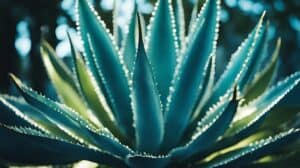Russelia equisetiformis, commonly known as firecracker plant, is a popular ornamental plant that is native to Mexico and Central America.
It is widely grown for its attractive, tubular, scarlet-red flowers that bloom profusely during the summer months.
Firecracker plant is a fast-growing, low-maintenance plant that can be easily propagated from stem cuttings.
In this article, we will discuss the various methods of firecracker plant propagation and provide some tips on how to grow and care for this beautiful plant.

One of the easiest ways to propagate firecracker plant is by taking stem cuttings.
This involves cutting a stem from the parent plant and rooting it in a suitable growing medium.
Stem cuttings should be taken from healthy, disease-free plants during the growing season.
The cuttings should be about 4-6 inches long and should have at least two sets of leaves.
Once the cuttings are taken, they should be immediately placed in a container of water to prevent wilting.
Another method of firecracker plant propagation is by division.
This involves dividing the parent plant into several smaller plants, each with its own root system.
Division is best done during the spring or fall when the plant is actively growing.
The plant should be carefully dug up and the root ball should be gently separated into smaller sections.
Each section should have at least one stem and a healthy root system. The new plants should be planted in a suitable growing medium and watered thoroughly.
Understanding the Firecracker Plant
Species Overview
The Firecracker Plant, also known as Russelia equisetiformis, is a tropical plant native to Mexico and Central America.
It belongs to the family of flowering plants known as Plantaginaceae.
The plant is known for its vibrant, tubular red flowers that resemble firecrackers, hence its name.
The flowers bloom all year round, making it a popular choice for gardens and landscaping.
Growth Habits
The Firecracker Plant is a fast-growing and low-maintenance plant that can grow up to 10 feet tall in the right conditions.
It is a perennial plant that is hardy in USDA zones 9-11. The plant prefers full sun to partial shade and well-draining soil.
It can also tolerate drought and heat, making it an ideal plant for arid regions.
The Firecracker Plant can be propagated through stem cuttings or seeds. Stem cuttings are the easiest and most reliable method of propagation.
The plant can also be propagated through division, but this should be done in the spring or fall when the plant is dormant.
Overall, the Firecracker Plant is a beautiful and easy-to-grow plant that can add a splash of color to any garden or landscape.
Propagation Basics

Best Time to Propagate
Propagation of Firecracker Plant is best done during the spring season when the plant starts to show new growth. This is usually around March or April.
It’s important to wait until the winter frost has passed before propagating.
If you live in a region with a warmer climate, you can propagate the plant during the fall season.
Tools and Materials Needed
Before starting the propagation process, ensure that you have the following tools and materials ready:
- Pruning shears
- Rooting hormone
- Potting soil
- Watering can
- Pots or containers
- Plastic bags or plastic wrap
It’s important to use clean and sterilized tools to avoid introducing any bacteria or diseases to the plant.
Rooting hormone is also essential in promoting root growth.
Once you have all the necessary tools and materials, you can proceed with the propagation process.
Propagation Methods

Russelia equisetiformis, commonly known as Firecracker Plant, is a popular flowering plant that is native to Mexico.
It is a great addition to any garden or landscape, and propagating it is easy. Here are three common propagation methods:
Stem Cuttings
Stem cuttings are the most common and easiest way to propagate Russelia equisetiformis.
Simply take a cutting from a healthy plant, about 6 inches long, and remove the lower leaves.
Dip the cut end in rooting hormone and plant it in a well-draining soil mix. Keep the soil moist and in a warm, bright location.
In a few weeks, roots will start to form, and new growth will appear.
Layering
Layering is another propagation method that is effective with Russelia equisetiformis.
Simply bend a low-growing branch to the ground, and bury a section of it in the soil. Keep the soil moist, and in a few weeks, roots will start to form.
Once the roots have formed, cut the branch from the mother plant and transplant it to a new location.
Seed Sowing
Russelia equisetiformis can also be propagated from seeds. Collect the seeds from a mature plant, and plant them in a well-draining soil mix.
Cover the seeds lightly with soil and keep the soil moist.
Germination can take up to two weeks, and once the seedlings have grown a few inches tall, they can be transplanted to a new location.
Overall, propagating Russelia equisetiformis is easy and fun.
With these three propagation methods, anyone can enjoy the beauty of this plant in their garden or landscape.
Frequently Asked Questions

What are the best methods for propagating Russelia Equisetiformis?
Russelia Equisetiformis can be propagated through stem cuttings, division, or seeds.
The most common method is stem cuttings, which involves taking a cutting from the parent plant and rooting it in soil.
Can Russelia Equisetiformis be easily rooted in water?
While Russelia Equisetiformis can be rooted in water, it is not the best method.
Rooting in water can lead to rotting of the stem, and the plant may not survive after transplanting.
It is recommended to root the cuttings directly in soil.
What are the steps to propagate a firecracker plant indoors?
To propagate a firecracker plant indoors, take a cutting from the parent plant and remove the lower leaves.
Dip the cut end in rooting hormone and plant it in a well-draining soil mix. Water the soil and keep it moist until the cutting has rooted.
Place the pot in a warm, bright location, but away from direct sunlight.
Are there any special considerations when growing firecracker plants in containers?
When growing firecracker plants in containers, it is important to use a well-draining soil mix and a pot with drainage holes.
The plant should be watered regularly but not overwatered, and fertilized every two weeks during the growing season.
Pruning may be necessary to maintain the desired shape and size.
How do you address common problems when propagating firecracker plants?
Common problems when propagating firecracker plants include stem rot, fungal diseases, and pests such as mealybugs and spider mites.
To prevent these issues, ensure the cutting is taken from a healthy plant and planted in a well-draining soil mix.
Avoid overwatering and keep the plant in a warm, bright location with good air circulation.
Monitor the plant for any signs of pests or disease and take appropriate action if necessary.
Is the firecracker plant toxic to pets, and how can I keep my animals safe?
The firecracker plant is not known to be toxic to pets, but it is always best to keep plants out of reach of curious animals.
If you are concerned about your pets ingesting the plant, consider placing it in a location where they cannot access it or using a pet-safe deterrent spray.













